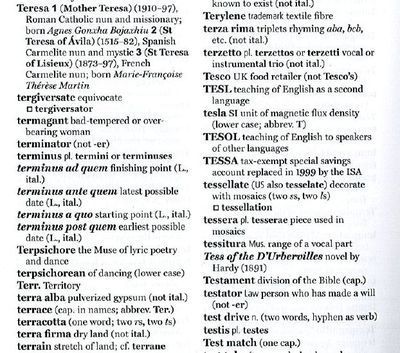Jacques Kallis and the lower-case Test
By ADRIAN TAHOURDIN
This blog seems to be oscillating predictably in its choice of subjects between French literature and cricket. I really ought to get out more.
The South African all-rounder Jacques Kallis retired from Test cricket earlier this week, signing off with a century – his 45th – against India in Durban, thereby helping his team to victory (South Africa are the 1st ranked team in the world and India the second, so it was a significant win). England, meanwhile, appear on the brink of a 5–0 drubbing by Australia.
Kallis’s contribution to his country’s cricketing success at the longer form of the game has been immense: over an eighteen-year career (he made his debut at the age of twenty) and 166 Tests, he has scored 13,289 runs at an average of 55.37, taken 200 catches (mostly at slip I imagine – “hands like buckets”, as they say) and 292 wickets at 32. These are staggering statistics. His tally of 97 sixes meanwhile puts him second behind only Australia’s Adam Gilchrist in that field and belies the notion of him as a dour play-safe accumulator of runs: he could be destructive when the situation demanded it. In fact, we are looking at of one of the most complete cricketers to have played the game: an indomitable, occasionally bullying batsman, superb slip fielder and aggressive and effective medium-fast swing bowler.
I write as someone who made a fool of myself with a letter to the TLS’s rival publication the London Review of Books back in October 2005, in response to an article by David Runciman about England’s momentous triumph over Australia in that summer’s Ashes series. Runciman had compared England’s man of the summer Andrew Flintoff unfavourably as an all-rounder with Kallis and I took objection. The letter (published) is here in full:
“David Runciman compares Andrew Flintoff’s record as an all-rounder unfavourably with that of the South African Jacques Kallis. It’s true that Flintoff’s batting and bowling averages (33 and 32 respectively) are inferior to Kallis’s 56 and 31, but comparisons of the two players’ records in matches against Australia are instructive: in his five tests against them so far Flintoff has scored 400 runs at an average of 40 and taken 24 wickets at 27 each, whereas Kallis, in 12 tests against Australia, averages 32 with the bat and has taken a mere 22 wickets at 39 each. Kallis’s test batting average of 56 against all-comers is admittedly impressive, but the dour South African has a reputation for gorging himself on weak Zimbabwean and Bangladeshi bowling. Also, Flintoff scores his runs at 67 per 100 balls, whereas Kallis manages a rather more Boycottian 42 per 100 balls.”
That probably felt clever at the time but time didn’t vindicate me as Flintoff never reached those heights again. I did witness his last significant act for England, in his final Test at the Oval in August 2009, where he ran out Australia’s No 3 Ricky Ponting with an Exocet of a throw from mid-off, thereby snuffing out Australia’s slim chance of victory and ensuring that England would have the Ashes. I have never seen a cricket ball thrown so hard and I swear that had it not splattered the stumps it would have carried on at a frightening speed towards where we were sitting. Flintoff, ever the showman. raised his arms in a trademark gesture of triumph, while Ponting could barely drag himself away from the crease.
Kallis has never, as far as I’m aware, quite displayed Flintoff’s flamboyance but it’s clear that his record is far superior to the Englishman’s, and he managed to up his strike rate from 42 runs per 100 balls to nearly 46, while Flintoff’s dropped by the end to 62. (I eat humble pie and will refrain, after this blog, from pronouncing on things I know next to nothing about.)
When I later endured watching England bat against South Africa, again at the Oval (in 2012) Kallis was the best bowler on show, which, given that South Africa have the most potent bowling attack in world cricket, was pretty impressive (he bounced Kevin Pietersen out). For good measure he scored 182 not out and South Africa won by an innings (this was the match in which Hashim Amla made a mere 311 not out, in a huge partnership with Kallis).
I was pleased at the time that the LRB saw fit to publish my silly letter but irritated at their lower-casing of the T of the word Test. Not even the Guardian which tends to lower-case most words, refers to “test” as opposed to Test matches. And as our style guide here, the New Oxford Dictionary for Writers and Editors, makes clear, the T should be capped.
This is a small pedantic point perhaps, but I suspect some people have a problem with cricket, seeing it as part of some kind of post-imperialist hangover. It can be hard to keep politics and ideology out of cricket. Having said that, maybe at the TLS we err too much on the side of upper-casing words that no longer demand it, but we are slowly, inexorably, moving into the twenty-first century.
Meanwhile the name Jacques Kallis with its vaguely French inflections has always intrigued me. Jacques is pronounced with a long “a” (preferably in a South African accent). I’ve yet to read a biography of the cricketer so don’t know his family history much beyond the fact that he hails from Cape Town. But online researches did throw up the following (in response to someone as curious as I am):
“The first Kalis (or Kallis) to arrive in the Cape (from Hungary) was Joseph Kalis, b 1753, d 17 Apr 1859. He or his ancestors were French, named Berange, fled France and went via Poland where the name was changed, taken from the town Kalisz. Kallis appears to be one branch of the family, from about the 1870's, starting with the children of Joseph Gerrit Kalis.”
So there you have it: a champion Test cricketer with possible French roots. It doesn’t get much better than that.
Peter Stothard's Blog
- Peter Stothard's profile
- 30 followers





